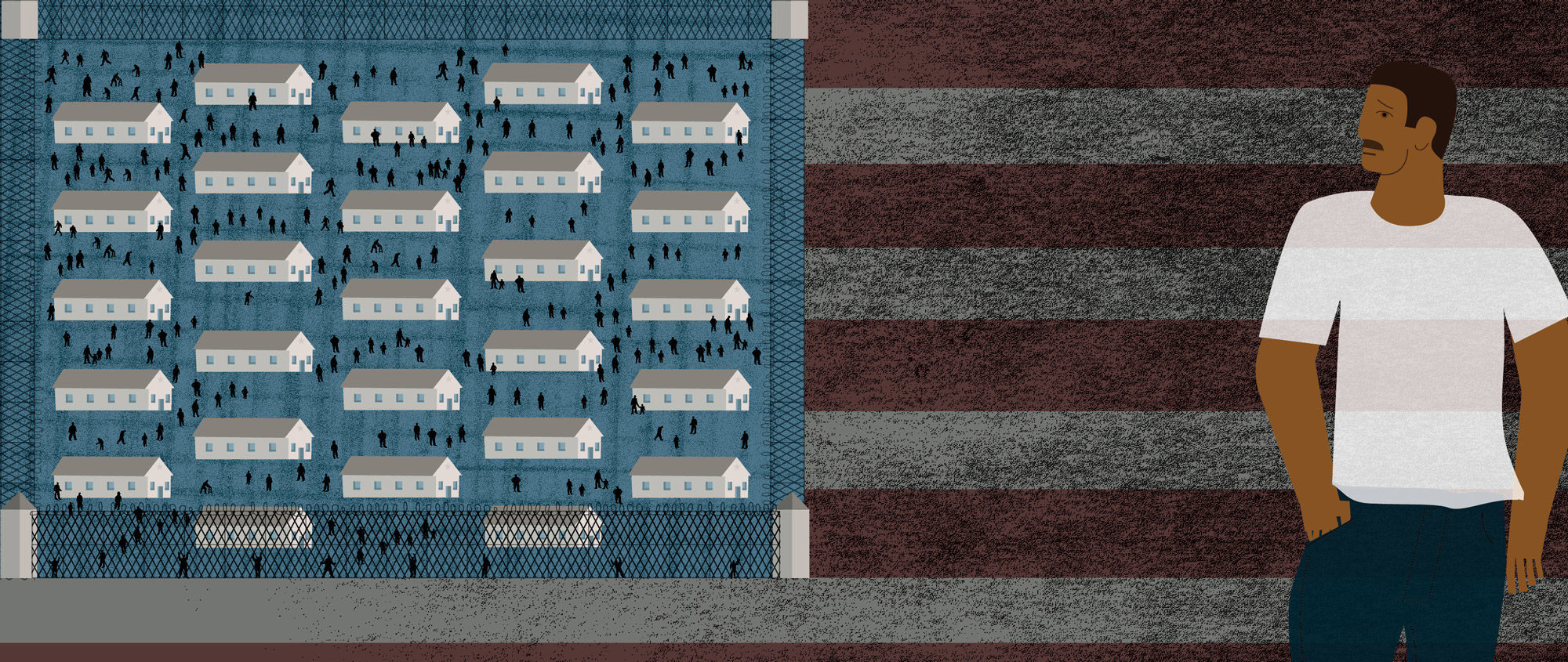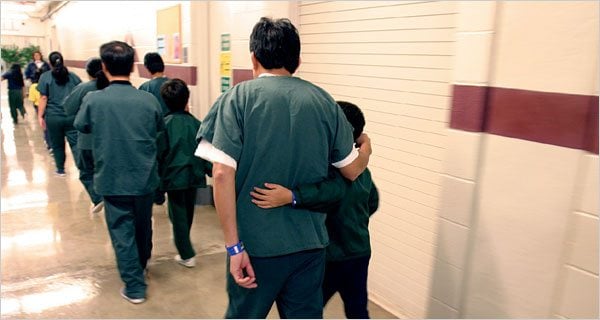By Gus Bova, Melissa del Bosque, Jen Reel and Emma Pérez-Treviño
The United States portrays itself as a beacon of freedom and liberty, yet it operates the world’s largest immigrant detention system, a burgeoning network that locks up refugees, asylum-seekers and other migrants who seek protection or a new life on our shores. In 2015 alone, more than 367,000 men, women and children were imprisoned in a system of 637 public and for-profit private prisons. The Trump administration has promised a crackdown on undocumented immigrants that could set off more growth in the detention sector.
On any given day, as many as 42,000 people wait in detention as their cases slowly move through overburdened immigration courts. Some will languish for years, costing U.S. taxpayers $126 per inmate per day. Far more significant is the human cost. Incarceration often leads to illness, depression or even suicide. In little more than a decade, at least 166 immigrants have died while in detention.
Detention on such a mass scale is relatively new. The large majority of detention centers were built in the last decade, in part to ensure that migrants show up for their court hearings. But there are ways to do so while saving money and protecting human rights. Broadly referred to as “alternatives to detention,” such options include residential shelters run by nonprofits and faith-based organizations, electronic ankle bracelets that monitor the wearer’s location and greater use of parole. At $17 or less per person per day, these alternatives are a fraction of the cost of incarceration, but so far the federal government has only experimented with them on a small scale.
Critics of detention argue that a 2009 congressional mandate requiring that ICE maintain 34,000 daily detention beds forces the agency to choose detention over alternatives. The quota has helped boost the stock of for-profit prison companies, which have looked to non-criminal immigrants as a source of growth. Immigrants now represent the fastest-growing sector of the prison population.
The system is also financially burdensome. “We spend $2 billion a year just on detaining immigrants,” says Bob Libal, director of Grassroots Leadership, a nonprofit immigrant advocacy group. “And this is only part of a much larger detention and deportation apparatus that costs us billions, but it’s also costly in human lives.” Alternatives to detention such as residential shelters are a less expensive, more humane way to comply with U.S. laws, he says. “Detention should never be the first priority.”
This three-part series examines alternatives to the nation’s burgeoning immigrant detention system. Part I explores the human and financial cost of detention. Part II explores residential shelters as a potential alternative to detention. Part III examines the promise and peril of ankle monitors, which the federal government has increasingly turned to in lieu of detention.
This project has been made possible with the support of Solutions Journalism Network, a non-profit organization with the mission to spread the practice of solutions journalism.


